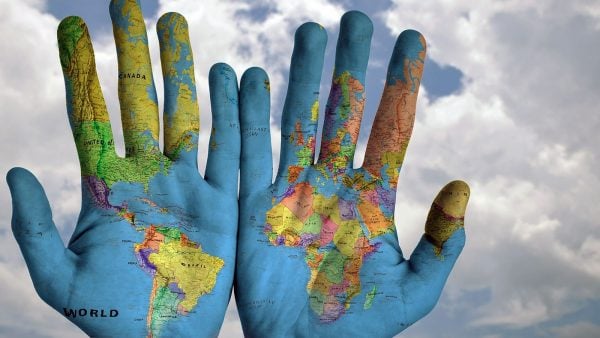Do you know the feeling when you see something and it completely blows your mind? We have worked with Google Maps since 2007 but we are still amazed by the endless possibilities it offers.
But besides navigation, what does it offer? It is impossible to list all the possibilities. Instead, we have found five of the projects that have impressed us the most.
Street View against Alzheimer’s
When the first Google Street View cars were sent out in the world in 2007, no one knew that their imagery would be used to help dementia patients remember a decade later. But they are.
Biomechanical engineer Anne-Christine Hertz was trying to develop new ways to treat Alzheimer’s patients and patients suffering from dementia. She wanted to help them preserve old memories, as memory loss is one of the most traumatic side effects of the diseases.
Our strongest memories are tied to location, and with this knowledge Anne-Christine built the prototype BikeAround. BikeAround combines a stationary bike with Google Street View to take dementia patients on a virtual bike ride down memory lane. Patients input a street address of a place that means something to them and then use pedals and handlebars to take a ride in, for instance, their old neighbourhood.
Tracking Greenland’s changing landscapes
In Greenland, Danish actor and UNDP Goodwill Ambassador Nikolaj Coster-Waldau use Google Street View Trekker to track climate changes.
We have been hearing about the terror of climate change for years now. With the trekker, Nikolaj and Google get very detailed pictures of what the landscapes are like today. If they go back in five years, they will be able to see how the landscapes have changed and how there is less of the important ice in five years time.
The climate is changing, but according to Nikolaj we have the technology and the brilliant minds to change it. What we need is the will of the people. An image is much more powerful than a graph or statistics, and that is why he tracks the greenlandic landscapes.
Mapping Methane
Speaking of climate change, the Environmental Defense Fund (EDF), who works to solve the world’s biggest environmental problems, also uses Google Maps APIs.
Among other things, EDF combats climate change by locating methane leaks underneath city streets. Methane, which is an extremely powerful greenhouse gas, is responsible for about 25 percent of the global warming that is threatening our climate - and some of it comes from leaky pipes.
Together with Google Earth Outreach, EDF has put methane analyzer on Google Street View cars. This way, the cars measure the concentration of methane in the air while they drive to capture 360-degree imagery.
EDF has now researched 20 US cities with the Google cars and mapped more than 4,000 methane leaks.
Toyota Safa and sound
The risk of car accidents is higher among the 16-19-year-olds than any other age group. The two main causes for accidents in this age group are speeding and smartphones. In an attempt to eliminate these accidents and fatalities, Toyota has created Safe and Sound: An Android app that can detect speeding and prevents distracted driving.
If Safe and Sound determines the teen is speeding, it will override the teen’s music with a Spotify playlist picked by the parents. The teen can’t switch music or turn it off until he or she once again drives at the speed limit.
The app prevents distracted driving by switching to a “do not disturb” mode that blocks notifications as well as incoming and outgoing phone calls and texts when the car is moving above nine miles an hour.
The Safe and Sound app was actually built in cooperation with Molamil and MapsPeople. If you want to read more about the project, click the green button below.
Ifit brings Google Maps to the treadmills
“Why would anyone need Google Maps on a treadmill or stationary bike?” That was my first thought when I found out that Ifit had integrated Google Maps into their fitness equipment. However, they did not come up with the idea because users were getting lost on the treadmill. They came up with the idea to keep users motivated and make them stick to their workout routines.
The fitness equipment have an attached android tablet where you can bring up Google Maps and pick a route. This allows you to see the route and your progress on the map as you run or bike. Furthermore, as the elevation of the route changes, the angle of the treadmill or bike also changes to match the real-life incline. This means that you can actually run the Boston Marathon with the exact route and all of its inclines right there on the treadmill. Of course, the solution also allows you to compete against others and monitor your progress.
April 5, 2018





.png)